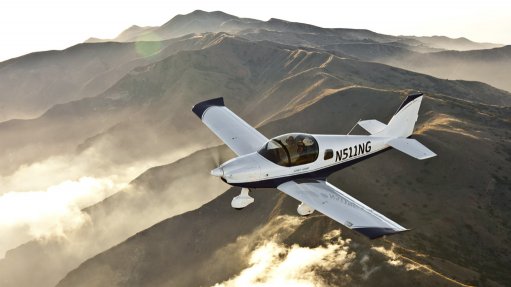
AIRCRAFT TECHNOLOGY In the small aircraft arena, continuing innovation has resulted in safer and faster small aircraft being manufactured
As battery systems improve, there is a shift towards electrically powered aircraft, which is causing a rapid change in propulsion systems in the aerospace industry, says South African aircraft manufacturer The Airplane Factory (TAF) director and shareholder Mike Blyth.
TAF is extending its global footprint through its partnership with Belgian aircraft manufacturer Sonaca Aircraft, in which TAF is a shareholder.
Sonaca Aircraft is leveraging TAF expertise in certifying a two-seater aircraft aimed at assisting in aerospace training. The design of the aircraft being certified – the Sonaca 200 – is based on a previously developed TAF aircraft, the Sling 2.
Blyth states that TAF does not offer full aircraft certification services, but that all the aircraft that the company produces are designed and tested to the relevant certification standards.
TAF is developing a new version of the Sling 2 – the Sling 2 high wing. Once this is complete, it also intends to develop a high wing version of the Sling 4.
“The company’s best exports to date have been to Australia, where TAF has a very good distributor. TAF now has distributors in France, Australia, New Zealand and Paraguay and, by the end of this year, the company will have appointed dealers in Argentina and Brazil,” he says.
Moreover, Blyth states that half of company sales comprise those to Southern African countries. TAF sells very few units to customers in North African countries. However, as the company establishes more offices and appoints dealers and distributors abroad, it expects global sales to increase considerably, Blyth adds.
Further, he explains that, in the small-aircraft arena, continuing innovation has meant that the aircraft currently being manufactured are safer and faster, making them more suitable for commuting.
Blyth says that, despite these advances, the market is not expanding across the board; the market is divided into two sectors: light sport aircraft and the experimental, or kit-build, sectors. “There is lots of competition in both markets. The light sport aircraft market is showing slight growth globally, while the kit-build market is declining very slightly.”
Blyth notes that the biggest challenge TAF has been facing in the local industry is its dealings with the South African Civil Aviation Authority (CAA). Experience with aviation authorities in other countries has shown them to be easier to work with.
The company has also established itself in the US, where it is making inroads into a very competitive national market, he states.
Further, the company’s Taiwan office was established last year and is progressing well. The office was established as part of an effort to establish the company in the Asian markets, as the company has its sights on the Chinese market.
Blyth says the company’s UK branch will open this month.